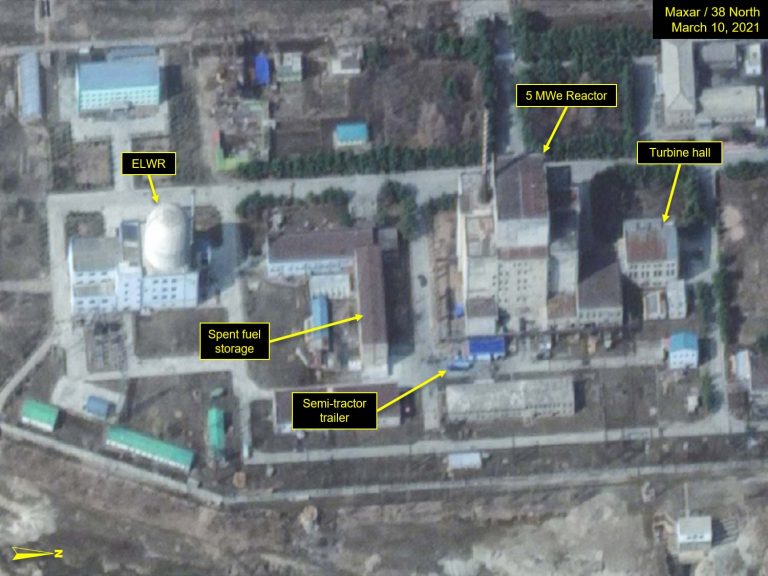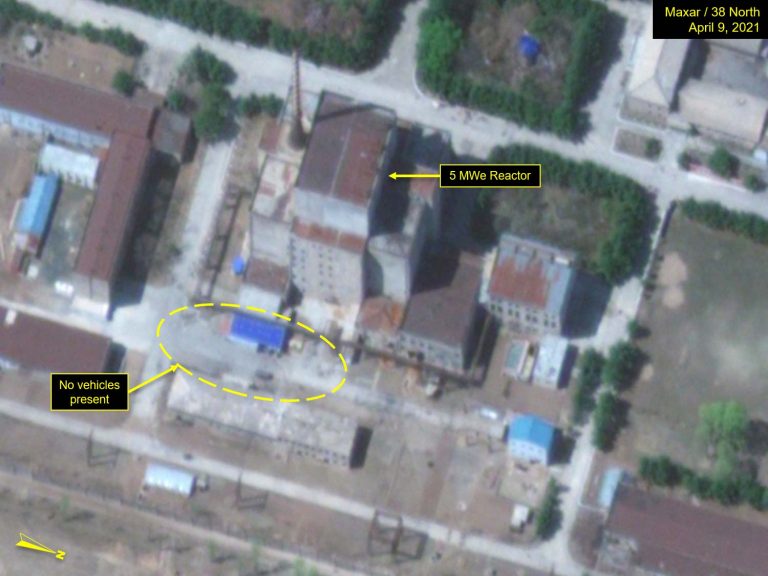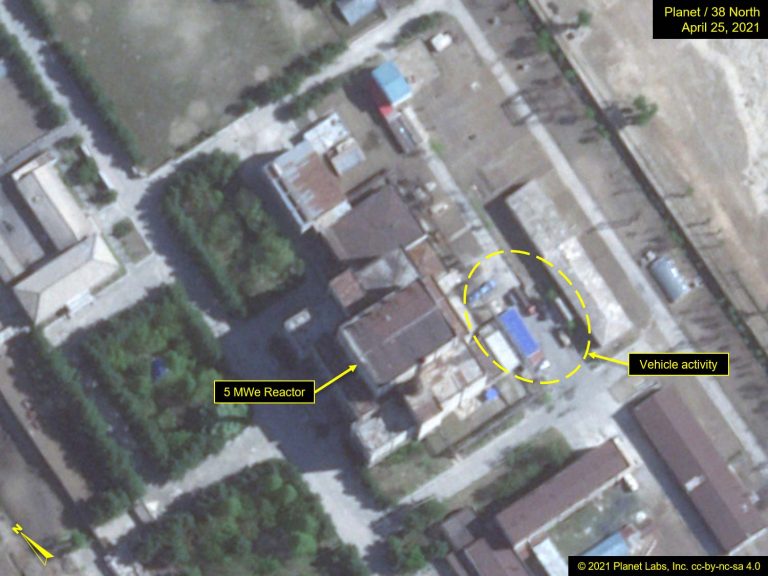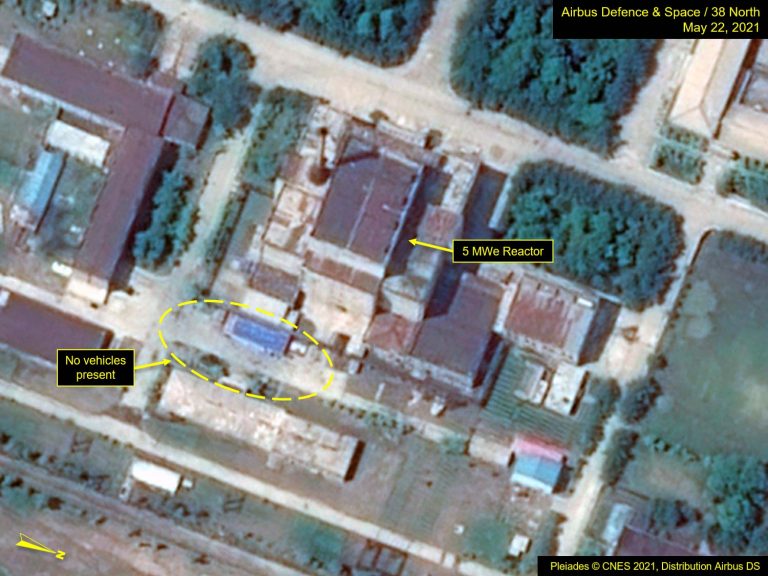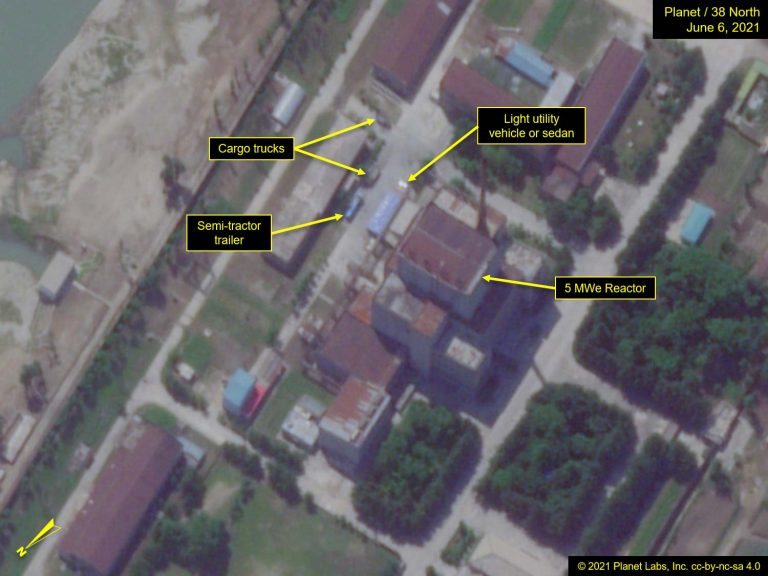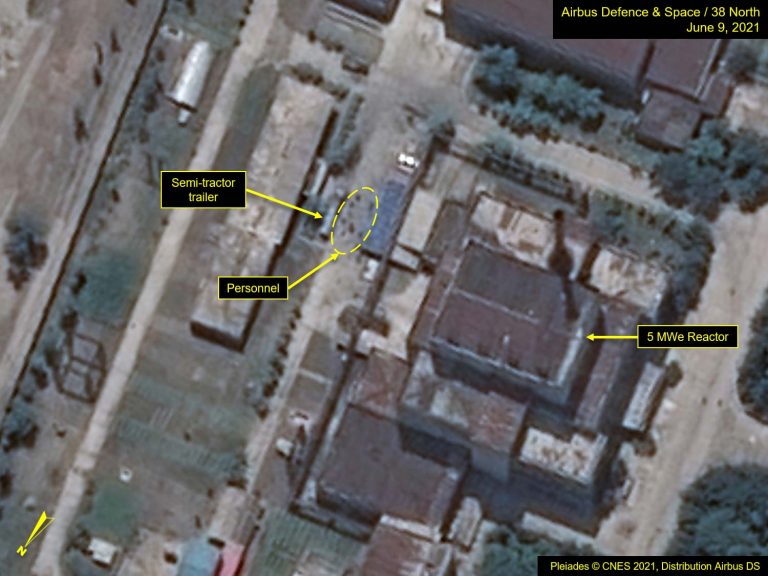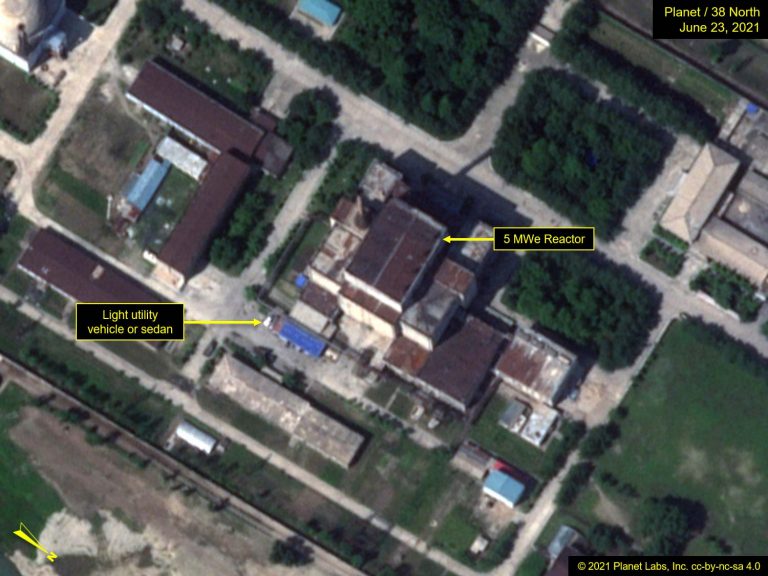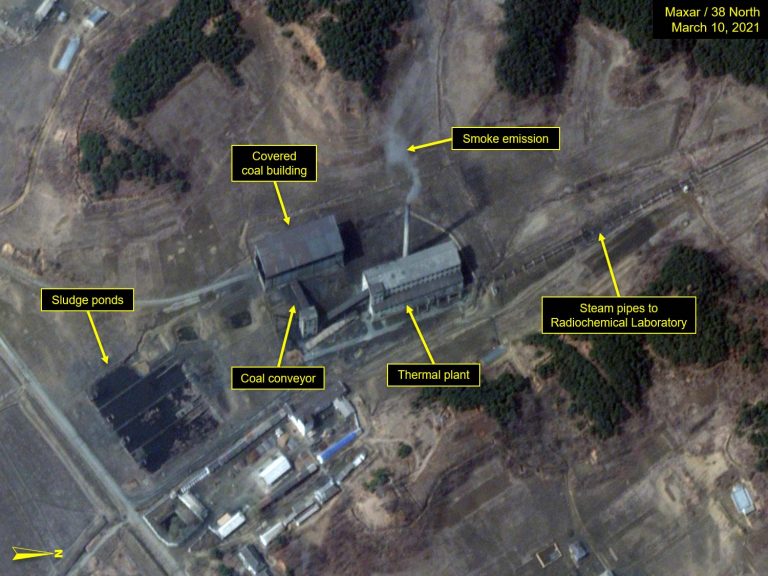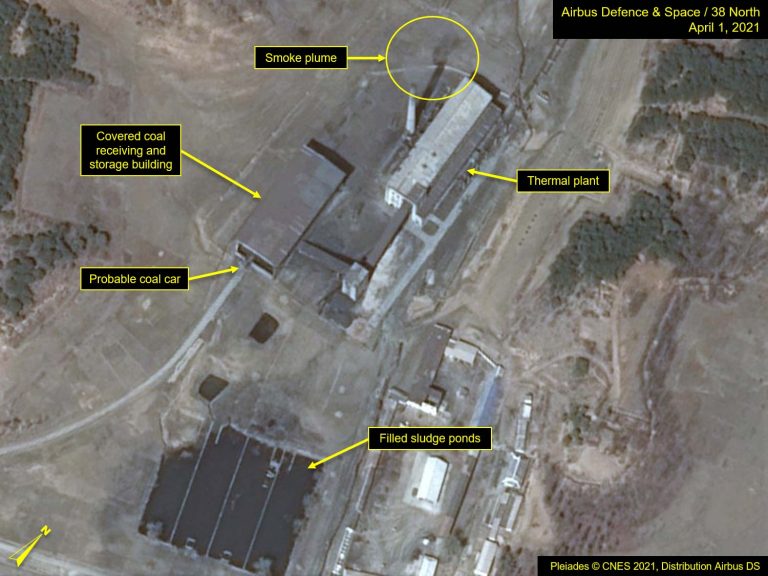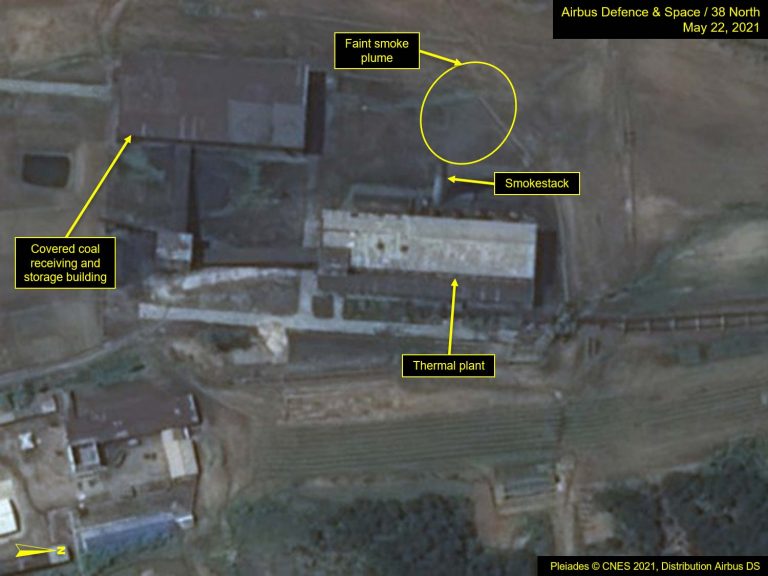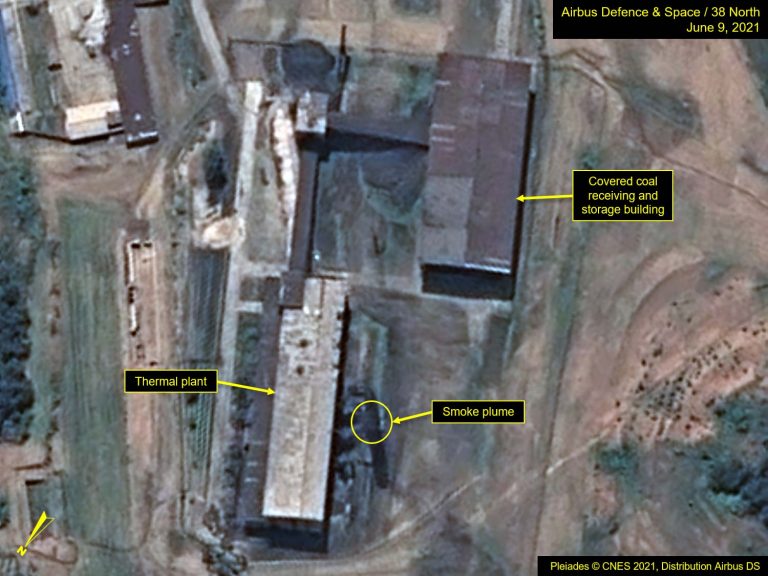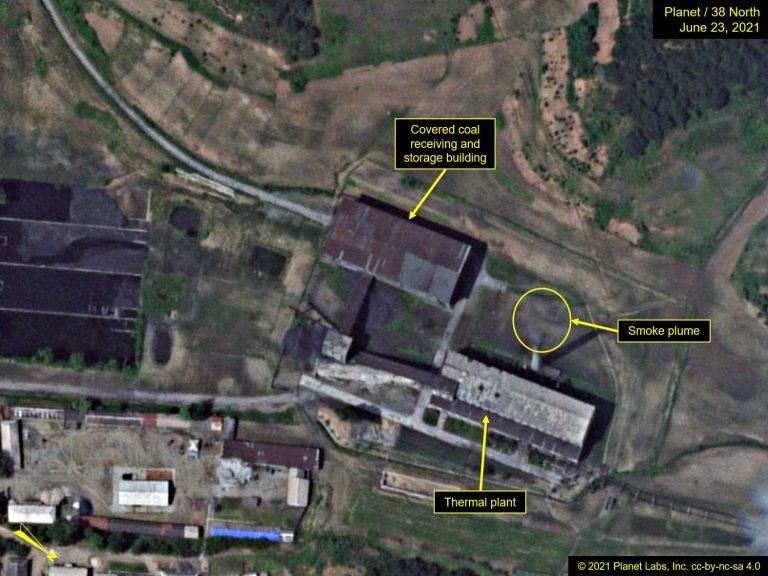North Korea’s Yongbyon Nuclear Complex: Assessing Activity at the Radiochemical Laboratory
Commercial satellite imagery of the Yongbyon Nuclear Scientific Research Center indicates that the Thermal (Steam) Plant, which provides steam for the various processes of the Radiochemical Laboratory (RCL)–North Korea’s spent fuel reprocessing plant for plutonium extraction–appears to have been operating from late February 2021 to the present.[1] This period of operation is longer than previous maintenance efforts and more consistent with the duration of earlier reprocessing campaigns. However, without additional visual signatures or on-the-ground inspection to confirm what is happening, it is possible that the current RCL activity is related to plutonium separation, the processing of remaining uranyl nitrate stocks, or treating radioactive wastes from previous reprocessing campaigns.
Since the 5 MWe Reactor is not known to have operated since 2018, any reprocessing campaign taking place now would be handling spent fuel from that previous run, as some is believed to remain in the reactor core or in the spent fuel storage area. It therefore does not change estimates regarding North Korea’s fissile material stocks, which have already factored in the plutonium inventory regardless of its reprocessing status. It is also important to note that the reactor is still being maintained and is likely ready to operate when needed.
The RCL and Past Reprocessing Campaigns
The RCL complex consists of the main reprocessing plant, which is used to reprocess and separate plutonium from the spent fuel of the 5 MWe Reactor. It is also used to store, treat and solidify high-, medium- and low-level radioactive wastes resulting from reprocessing.
Figure 1. The RCL consists of several buildings inside the perimeter wall.
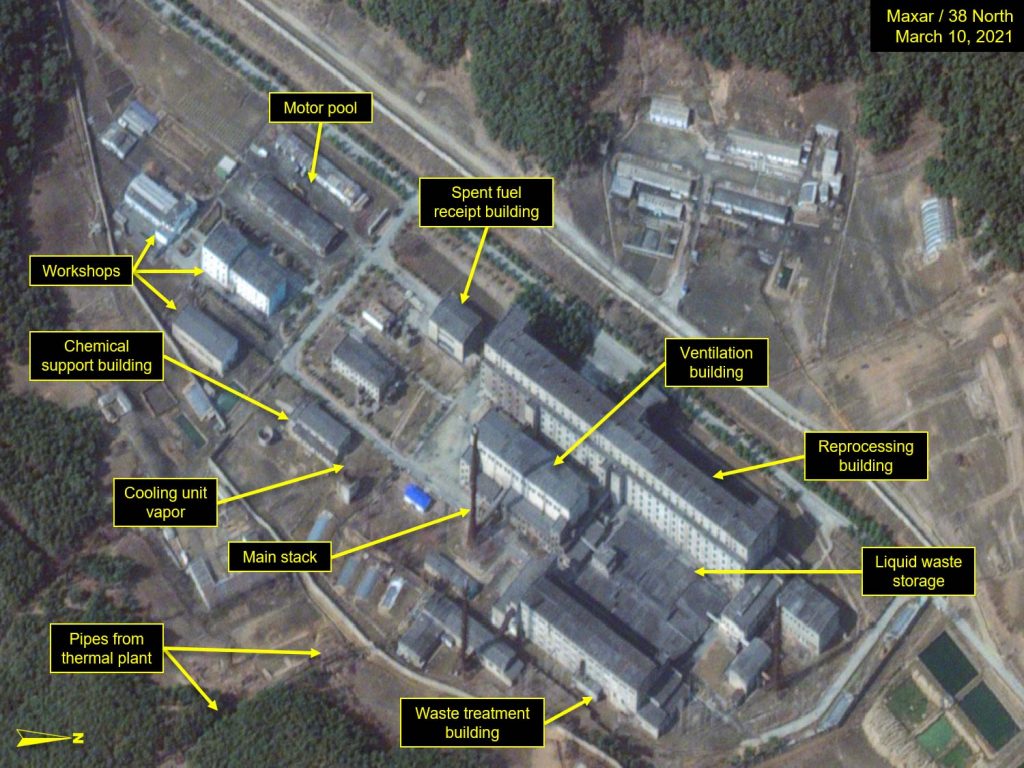
The RCL is known to have carried out spent fuel reprocessing campaigns in 2003, 2005, 2009 and 2016. Past reprocessing campaigns have lasted about half a year, and each processed a full load of spent fuel, a core of 50 tons, from the 5 MWe Reactor.
While part of that separated plutonium was used in the nuclear weapons tested between 2006-2016, it is estimated that about 40 kilograms of plutonium remain. As a result of reprocessing, the RCL also has tens of tons of uranium leftover as uranyl nitrate, which need to be converted to a uranium oxide powder. This conversion also takes place in the main reprocessing building.
Detecting Reprocessing Activities
There is a limited number of signatures that could indicate the RCL is operating. One is a plume of smoke emanating from the nearby coal-fired Thermal Plant, which provides necessary process steam for the reprocessing plant and the co-located radioactive waste handling facilities (Figure 5).
Other observable signatures include steam venting inside the RCL proper, faint plumes emanating from the ventilation stack of the main plant (Figure 2) and evidence of transfers of spent fuel and other materials to the reprocessing plant (Figure 3).
Figure 2. Plume from the ventilation building, 2016 campaign.
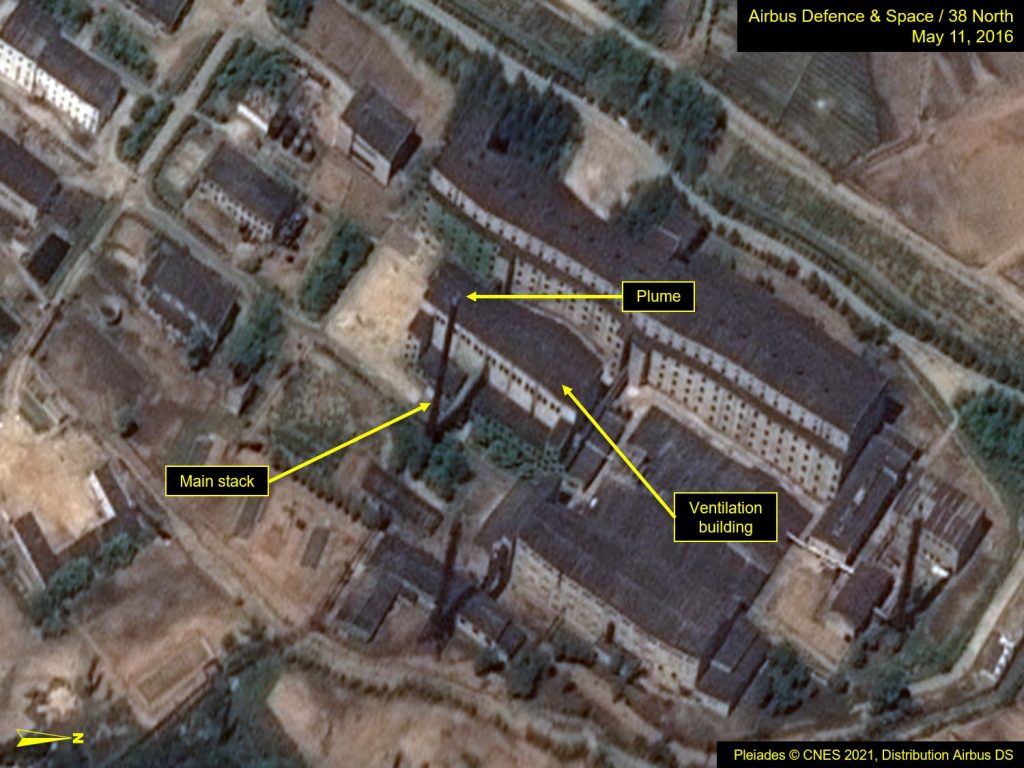
Figure 3. Railcars at the spent fuel receipt building, 2016 campaign.
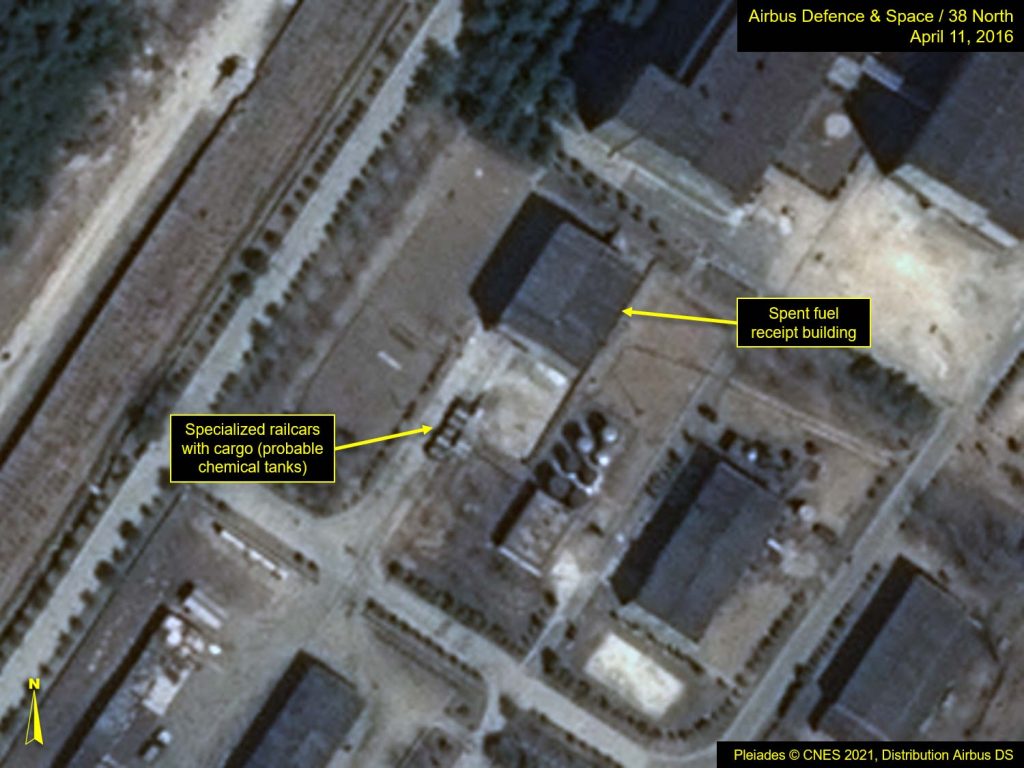
Since the RCL became active again in late February, a faint plume has been occasionally detected emanating from the main ventilation stack of the reprocessing building. This has historically only been seen during reprocessing campaigns. However, this building is also used to treat radioactive gases from the process area when other stacks in the complex are being used to support the waste handling and processing building. Therefore, it is still possible that the conversion of uranyl nitrate to uranium oxide, a process also connected to the ventilation building, is ongoing.
Thermal imagery can also be useful, especially if heat signatures can be detected at the process buildings at the west end of the complex nearest the reception building, where spent fuel is dissolved, or at sections used to treat resulting separated uranyl nitrate to oxides or for converting plutonium to metal, which is the key material for manufacturing nuclear weapons components.
Recent thermal imagery analysis by Beyond Parallel, derived from imagery taken on March 16, revealed that heat was coming from the main reprocessing plant, the ventilation building, and the radioactive waste handling building and its ventilation building. These heat signatures confirm ongoing activity within the RCL complex, but while tending to support the conclusion that North Korea is reprocessing spent fuel, it is also possible it is simply processing the remaining uranyl nitrate stocks.
Another key signature associated with reprocessing is the transfer of spent fuel from the 5 MWe Reactor to the RCL. The RCL does not have on-site storage capabilities, and therefore, when such activity is observed it is significant. Since late February, however, this has not been observed. While a number of personnel and truck movements have been noted around the 5 MWe reactor area in recent months, there has not been any sightings of a specific large truck that has been associated with past reprocessing campaigns, which was apparently used to transfer the spent fuel casks. It should be noted, however, that the transfers could also be timed to prevent overhead observation (e.g., at night).
Figure 4. Vehicle activity observed in reactor area.
Note: Hover over slideshow and click on left/right arrows to navigate.
Materials have been brought to the RCL using railcars in the past (Figure 3), but trucks can also be used for such activity and can now also enter the building for unloading, which prevents observation of further activity. Despite the fact that these specialized railcars no longer visit the RCL, they continue to be used at Yongbyon, as most recently evidenced on on May 22, when a train with three such railcars was seen on a track leading to the storage area and truck depot in the western parts of the Yongbyon center rail yard. These specialized railcars appear at the transfer station at the east end of the UEP complex three to four times a year, but their content and return destination has yet to be determined.
Finally, while reprocessing campaigns generally take around six months to complete, the Thermal Plant has been observed in the past operating for shorter intervals—only weeks—and likely were not related to reprocessing but were more likely for maintenance purposes. This was the case in 2018, when smoke was briefly observed coming from the Thermal Plant. However, present operations have continued for approximately four months, a time frame is more consistent with a reprocessing campaign or the conversion of uranyl nitrate to uranium oxides.
Figure 5. Thermal Plant has been in operation since March 2021.
Note: Hover over slideshow and click on left/right arrows to navigate.
- [1]
See: Jack Liu, Olli Heinonen, Peter Makowsky and Frank Pabian, “North Korea’s Yongbyon Nuclear Center: Additional Activity at the Radiochemical Laboratory and Uranium Enrichment Plant,” 38 North, March 12, 2021, https://www.38north.org/2021/03/north-koreas-yongbyon-nuclear-center-additional-activity-at-the-radiochemical-laboratory-and-uranium-enrichment-plant/; Frank Pabian, Olli Heinonen, Jack Liu and Peter Makowsky, “North Korea’s Yongbyon Nuclear Center: Reprocessing Status Remains Unclear,” 38 North, April 7, 2021, https://www.38north.org/2021/04/north-koreas-yongbyon-nuclear-center-reprocessing-status-remains-unclear/; and Frank Pabian, Olli Heinonen, Jack Liu and Peter Makowsky, “North Korea’s Yongbyon Nuclear Scientific Research Center: Satellite Update,” 38 North, May 28, 2021, https://www.38north.org/2021/05/north-koreas-yongbyon-nuclear-scientific-research-center-satellite-update/.

